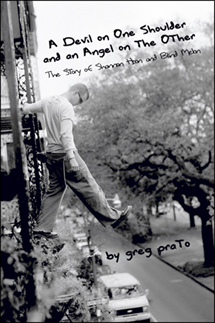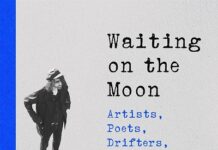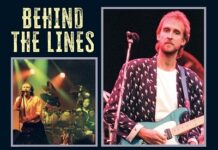Not many guys get the well-researched, behind-the-scenes dirt that Greg Prato
does for his new book: A Devil On One Shoulder And An Angel On The Other:
The Story Of Shannon Hoon And Blind Melon. This is an exhaustively
compiled 150 pages of interviews with members of Blind Melon, their friends
from other bands, family members, record execs tour personnel and Shannon Hoon
himself.
What Prato has written is more like an edited compilation; the book’s
interviews are like a fan’s paean to one of his favorite bands. While
I may not agree with all his lofty claims of what the band was, could have become
with Hoon, and are now without him, you can tell from the get-go (even without
reading the author’s intro) that he loves Blind Melon, and adored Shannon
Hoon. But he’s an honest enough guy to let the warts show through as well.
Beginning with Hoon’s teen years in Indiana — taken from interviews
with his mom Nel, friends, girlfriends and other high school chums — we
learn about Hoon’s good looks, his athleticism, his drinking (which could
be possibly attributed to his dad, who seemed to have had this particular monkey
on his back as well), and his rather strong set of pipes.
One quote in this early chapter concerning Hoon says, “If there was trouble
somewhere in town, you could bet Shannon was involved.” From statements
like these, we learn Hoon was a bit of a wild guy, not as bad as some, certainly
worse then others, but not an evil seed. Between karate and alcohol, the two
could be a volatile combination for someone like Hoon.
There’s another chapter devoted to the Blind Melon guys prior to the
band’s formation. The book really takes off when Prato gets into the group’s
origins — the scene in Los Angeles (complete with Hoon’s friendship
with fellow Hoosier Axl Rose), the addition of members, the mechanizations of
label supporters, and generally good descriptions of the music world at the
time. Reading about Blind Melon’s rise during the pre-post Cobain wave
was quite enlightening.
Alongside fun anecdotes about Blind Melon’s tours (especially in Japan)
and meeting classic producers, there’s tales of Hoon’s downward
spiral and personal battle with drugs around the time of Woodstock (though the
singer said he had “fond memories of that gig”). One wonders how
much trouble the guy might have been in and how much he was aware of how much
trouble he might have been in.
I loved the chapter about the band’s tour with the Rolling Stones. One
incident related here touches on how Hoon didn’t use a wireless and was
constantly hooking the lights as he ran about stage with an extra-long microphone
cord. Of course, being on the road with the World’s Greatest Rock &
Roll Band also afforded the band stays in some of the finest hotels and backstage
snooker games with Ron Wood. It also apparently led to the unfortunate introduction
of heroin into the band’s circle, though it is speculated in the book
that Hoon might have been into it before that.
For true Melon fans, there are well-documented accounts of the recording of
their second album Soup, another chapter deciphering the songs, and still another
about the lackluster sales performance of the release.
Hoon’s drug intake is cited throughout, even when he had a new baby and
more stress than usual. At one point, he managed to get sober, but when he was
back on the road and away from his daughter, he quickly feel back into old habits.
Even though you can tell Prato adores his subject, he doesn’t sugarcoat
the group’s problems or Hoon’s self-destructive ways. This impartial
positioning is what makes the book more captivating than the actual subject
matter.
There are the sad details of Hoon’s last day, the aftermath of his death,
and Blind Melon’s search for a new singer. In one chapter, final impressions
of Hoon are shared. There are many views on how he should be best remembered,
but his mom has the last word on how her son and the members of Blind Melon
were like “brothers.” The last chapter touches on the band’s
reunion plans and their new singer, Travis Warren.
In a book like this, the author runs the risk of culling interviews that reflect
only the genius of the band. But Prato pulls no punches, sets up no judgments,
and presents the story pretty much from the point of view of those who were
there. This alone is a monumental feat, not to mention editing these interviews
from over 50 names listed at the beginning of the book. A Devil On One
Shoulder And An Angel On The Other: The Story Of Shannon Hoon And Blind Melon
is an interesting read even if you know nothing about Blind Melon or Shannon
Hoon. But doubly so if you’re a fan of the band.




















